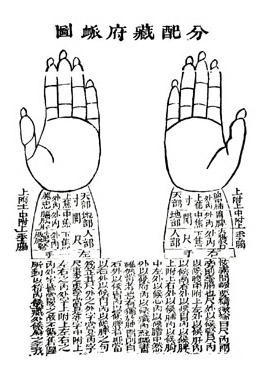Diagnosis
Traditional Chinese Diagnosis
We utilize Chinese medical diagnostics that have been honed over thousands of years. Assessing the radial artery and tongue, in particular, allows in-depth analysis of all major organs, associated meridians and body areas.
The tongue and pulse are microcosms for the entire body and therefore offer insights from a Chinese medical perspective, just as relevant as x-rays and blood tests.
A Traditional Chinese Medicine (TCM) doctor assesses a person’s constitution, syndromes, disease, and state of health by collecting and analyzing clinical information gathered from an array of diagnostic methods. Following are descriptions of a few diagnostic methods that we use in our clinic.
Acupuncture History & How it Works
Acupuncture points are the end product of millions of detailed observations. Through empirical experience, the use of specific points on the skin were shown to be of value in particular diseases. As this system grew each point was given a name and Chinese character, depending on its therapeutic properties.
The first clear reference to the points and channels is in the Nei Ching Su Wen which defines the main channels and acupuncture points. The Nei Ching Su Wen also makes the observation, “in pain, puncture the tender spot”. The use of painful points probably represents the original method by which many of the acupuncture points were discovered.
Modern studies have confirmed that acupuncture stimulates the release of endorphins and opiate-like compounds that reduce and stop pain. Micro-traumas caused by needling dissipate fibrous tissue and initiate delivery of platelet-derived growth factor, helping to restore circulation and repair damaged tissue.
Acupuncture Points
Acupuncture points were ultimately grouped into a system of channels, which conduct the movement of vital energy through the body. Much like blood vessels, this intricate network of meridians flows through the body just as streams and rivers ebb and flow across the surface of the earth.
Meridians
Every organ system has a set of meridians that correspond to a specific internal organ and organ system. The acupuncture points on a channel direct the flow of vital energy through the channel, influencing both disease and healthful processes in the body.
Pulse Diagnosis
Pulse diagnosis has been an essential theme throughout Chinese medical literature. From the earliest Chinese case histories in the second century BC, doctors prescribed remedies based on pulse taking.
Pulses report the emotional and physiological behavior of the body as it occurs and often before symptoms manifest. Observing desired changes in the pulse during the course of treatment are essential indicators for discerning if the selected strategy is effective.
There are many methods of pulse diagnosis. In Traditional Chinese Medicine there are six positions that all have a particular organ, meridian and elemental association.
Tongue Diagnosis
The tongue will show the depth and nature of an imbalance, and is also useful as a measurement tool for gauging the progression of a disorder.
Many attributes come into play: Color, shape, coat, and movement. All of which gives useful information about specific organs, digestive function, nature of a disease and much more. Each area of the tongue also relates to a specific area of the body.






